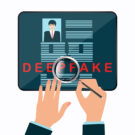Generative Artificial Intelligence (GAI) is machine learning technology capable of creating new content in response to simple text prompts. The convenience and apparent scope of this AI-generated content are transformative in many ways
Executive Summary
What happens if generative AI tools grow in reach and sophistication to influence trends, like social inflation and class action litigation, that could significantly impact insurers? That's just one of the questions that Verisk's Eric Gesick raised in this article exploring two potential areas of increased liability risk arising from the use of GAI: flawed and protected data creating IP exposures or producing bad output; and the dangers of these GAI tools falling into the hands of bad actors (think cyber criminals) or amplifying trends like civil unrest or social inflation. A version of this article was previously published by Verisk in two parts on its website: Generative AI In Focus, Part I: Is Generative AI Generating Liability Risks? And Generative AI in Focus, Part II: Cybersecurity, Civil Unrest & Social Inflation Concerns. It is republished here with Verisk's permission.Still, it can potentially create new liability risks for businesses across numerous industries. And due to the large number of companies across industries that may employ GAI or rely on vendors that do, these risks could become systemic.
The Arium Liability Analytics and Emerging Issues teams at Verisk, explored two potential areas of liability risk resulting from the increasing use of GAI. The first includes issues within GAI training data (e.g., biases or the presence of private or copyrighted materials) and the potential for erroneous outputs (so-called “hallucinations”). The second results from the dangers of these tools falling into the hands of bad actors—as well as the potential for GAI to amplify trends like civil unrest or social inflation.
Flawed and Protected Data
How does flawed or protected data create liability risk for GAI training and output?
GAI is trained on datasets and existing content, providing the model with ample information to synthesize into new content when responding to a prompt. Issues may arise during either the training of a GAI model or the content generation that might raise several liability risks for general liability, directors and officers (D&O), professional liability or errors and omissions (E&O), employment practices liability, and product liability lines of business. Depending on a company’s GAI use case, there’s also the possibility that several risks could arise simultaneously, potentially compounding exposure across several lines of business.
These risks may include:
































